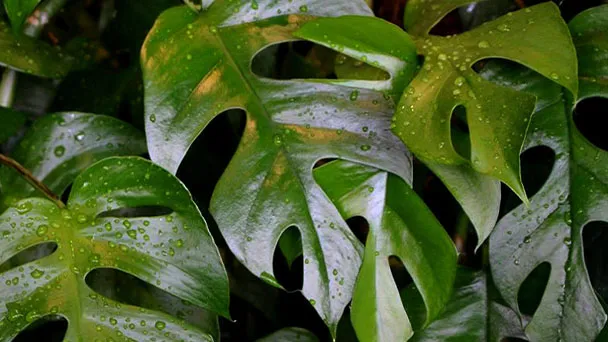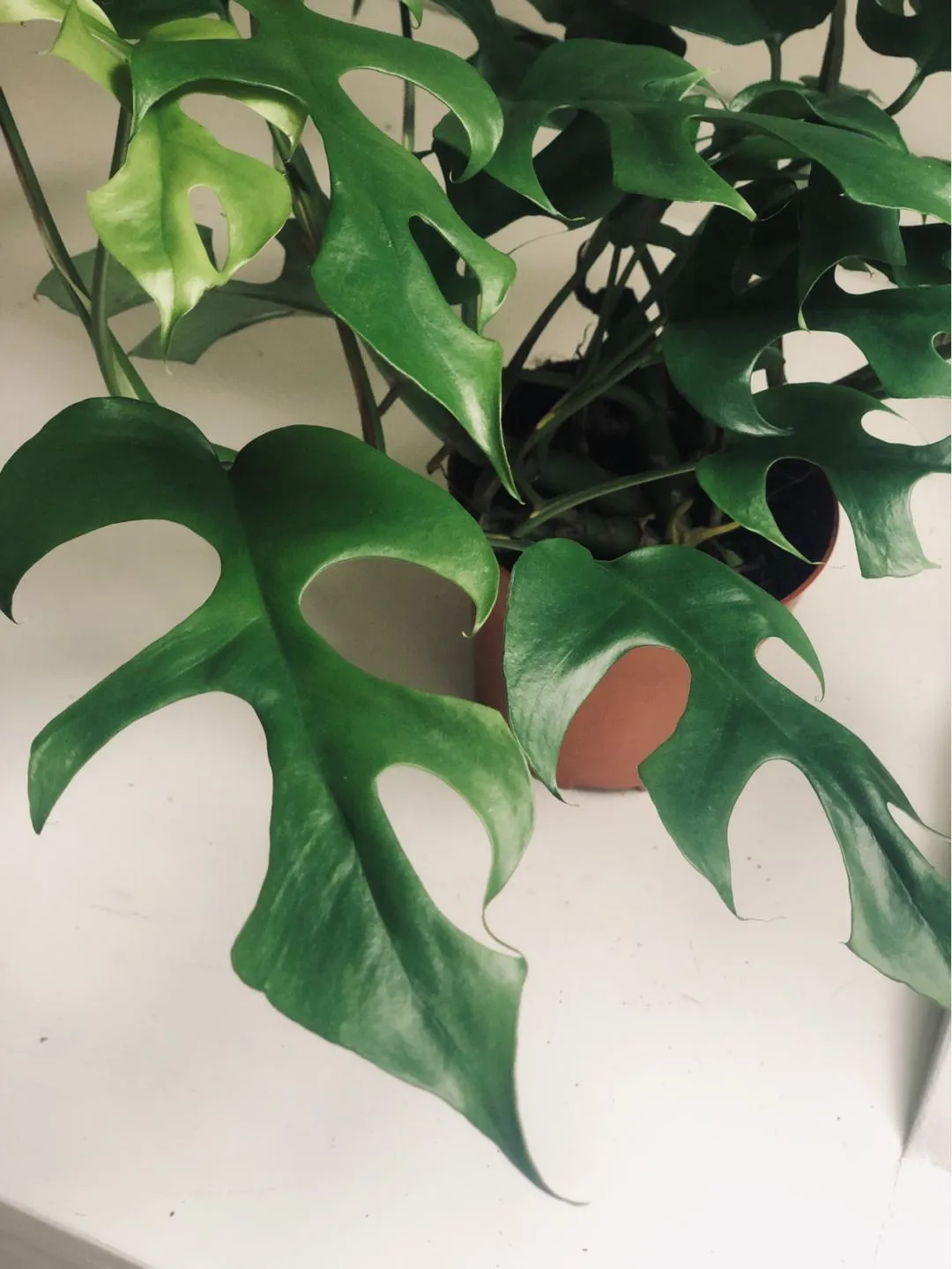How To Save My Rhaphidophora Tetrasperma Root Rot?
Written by Ivy
Dec 28 2021

The root rot of Rhaphidophora Tetrasperma may be caused by too much water and nutrients provided to the plant during maintenance, resulting in the failure of the root of Rhaphidophora Tetrasperma to grow normally. During later maintenance, it is necessary to provide it with mineral rich water and balanced nutrients to avoid root rot of the plant. It is also possible to irrigate Rhaphidophora Tetrasperma with disinfectant every other week, Eliminate the bacteria in the root and let the plant grow healthily.
Read More:
How To Water Rhaphidophora Tetrasperma?
If Rhaphidophora Tetrasperma has rotten roots, do not apply fertilizer first, then dig Rhaphidophora Tetrasperma out of the flower pot, cut off the rotten roots, trim the leaves, and dry them in a cool and ventilated place. After the wound is dry and healed, it can be planted.
Rotten roots appear in the hydroponic Rhaphidophora Tetrasperma. First, trim the rotten roots to prevent further infection. The trimmed roots shall be disinfected in potassium permanganate solution, and then taken out to dry. Clean the hydroponic vessels, replace all the water, and then remove some moss on the inner wall. Add water again, and then put the treated Rhaphidophora Tetrasperma back. After it grows again, it can be maintained normally.
Causes of rotten roots of Rhaphidophora TetraspermaHow to treat rotten roots of Rhaphidophora Tetrasperma?Rhaphidophora Tetrasperma Hydroponic Rotten RootsHow to Prevent Rhaphidophora Tetrasperma from Root Rotting?
Causes of rotten roots of Rhaphidophora Tetrasperma
- Excessive Watering
Read More:
How To Water Rhaphidophora Tetrasperma?
- Excessive Fertilization
How to treat rotten roots of Rhaphidophora Tetrasperma?
When taking care of Rhaphidophora Tetrasperma, it is necessary to do a good job in water and fertilizer management. On the premise of ensuring sufficient nutrients for growth, avoid excessive water and fertilizer, which can play a certain role in preventing rotten roots.If Rhaphidophora Tetrasperma has rotten roots, do not apply fertilizer first, then dig Rhaphidophora Tetrasperma out of the flower pot, cut off the rotten roots, trim the leaves, and dry them in a cool and ventilated place. After the wound is dry and healed, it can be planted.

Rhaphidophora Tetrasperma Hydroponic Rotten Roots
In addition to soil culture, Rhaphidophora Tetrasperma will rot. In water culture, Rhaphidophora Tetrasperma root will rot. At this time, the rotten roots are mostly because the roots of Rhaphidophora Tetrasperma are infected with bacteria during hydroponic culture. When the bacteria multiply in large numbers, they will corrode the roots and lead to rotten roots.Rotten roots appear in the hydroponic Rhaphidophora Tetrasperma. First, trim the rotten roots to prevent further infection. The trimmed roots shall be disinfected in potassium permanganate solution, and then taken out to dry. Clean the hydroponic vessels, replace all the water, and then remove some moss on the inner wall. Add water again, and then put the treated Rhaphidophora Tetrasperma back. After it grows again, it can be maintained normally.
How to Prevent Rhaphidophora Tetrasperma from Root Rotting?
- Rational Fertilization
- Proper Watering
- Use Medicament
- Regular Ventilation
Latest Updated
- Benefits of Bugleweed - 7 Science-backed Health Benefits
- Bugleweed Dangers & Side Effects - Is It Poisonous?
- How to Plant Evergreen Trees - What You Should Know
- When to Plant Evergreens - Grow Guide for Evergreen Trees
- 12 Wonderful Evergreen Shrubs for Your Garden
- 12 Popular Evergreen Plants with Pictures for Beginners
- When And How To Prune A Lilac Bush Like a Pro
- How to Grow & Care for Lilac Vine (Hardenbergia Violacea)
- Japanese Lilac Tree (Syringa Reticulata) Care & Propagation Guide
- Shumard Oak Pros and Cons - What to Know
Popular Articles
- Winter maintenance of Antirrhinum Majus
- How to Grow Terminalia Mantaly Tree
- How to Grow and Care for Crossostephium Chinense
- How to grow Antirrhinum Majus in spring
- Peristeria Elata (Dove Orchid) Profile: Info & Care Guide
- Underwatered Snake Plant (Sansevieria Trifasciata) - Signs And How To Fix
- How to Care for Brazilian Jasmine Plant (Mandevilla Sanderi)
- How to Grow & Care for Graptopetalum Purple Delight in Summer
- Rosa Chinensis (China Rose): Plant Growing & Care Tips
- How to Care for Baby Sun Rose (Aptenia Cordifolia)